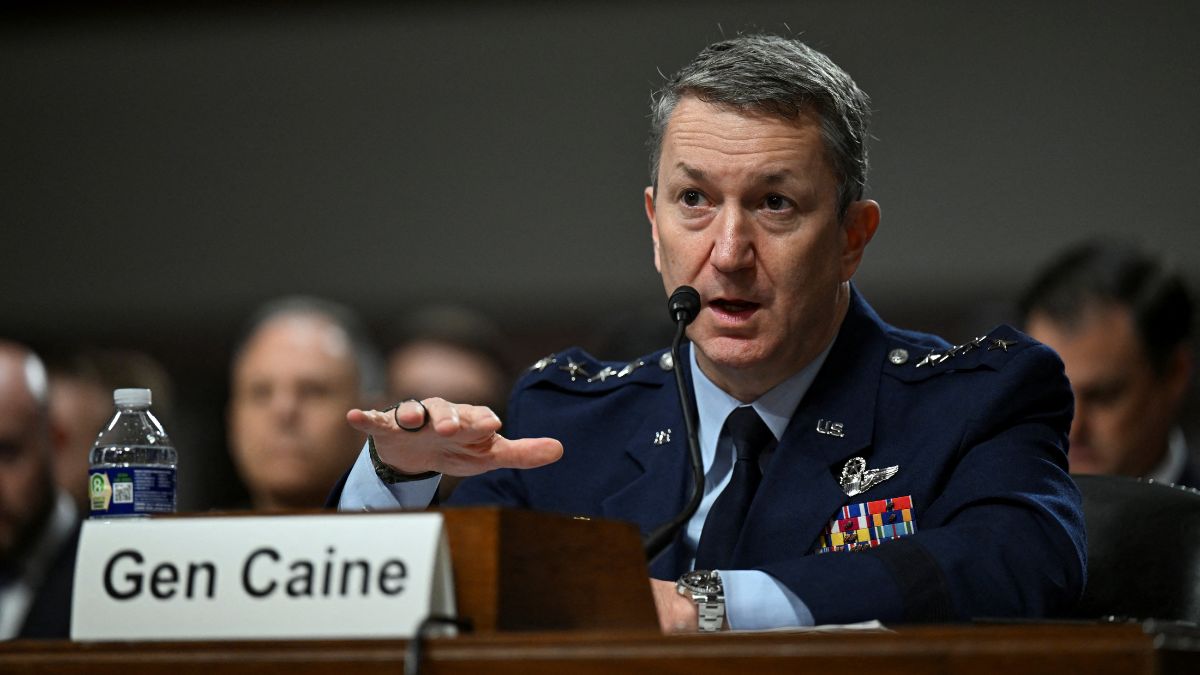The US joined forces with Israel in the most significant Western military move against Iran since its 1979 Islamic Revolution, despite appeals from across the globe urging caution and a return to talks.
The American strikes on Iran’s nuclear facilities came after a week of open fighting between Israel and Tehran.
Read latest updates about America joining Israel-Iran war here.
General Dan Caine , chairman of the Joint Chiefs of Staff, said the US carried out strikes using 75 precision-guided weapons, including bunker-buster bombs and over two dozen Tomahawk missiles, targeting three Iranian nuclear facilities.
Caine and US Defence Secretary Pete Hegseth addressed reporters at the Pentagon, describing the most serious military campaign of Donald Trump’s presidency.
ALSO READ | Did US strikes destroy Iran’s nuclear sites? Can it still build a nuclear bomb?
But who is Dan Caine, and what role did he play in the operation?
Here’s a look:
Who is Dan Caine?
Caine was a major architect of **'Operation Midnight Hammer',** several US officials and people familiar with the deliberations told The Wall Street Journal.
Though he had mostly stayed out of the spotlight, he has come out as an influential figure behind the scenes.
So, what do we know about him?
Caine is the 22nd Chairman of the Joint Chiefs of Staff, the country’s top-ranking military officer and the main military adviser to the President, the Secretary of Defence, and the National Security Council.
Before taking on this role on April 11, 2025, he served as Associate Director for Military Affairs at the Central Intelligence Agency.
Over the years, Caine has held several roles across operations, staff duties and joint commands. His background includes serving as an F-16 fighter pilot, weapons officer, White House staff member, and special operations officer.
Impact Shorts
More ShortsHe has also taken part in various leadership and security programmes, including courses at Harvard Kennedy School and Syracuse University’s Maxwell School.
ALSO READ | Did US use Indian airspace to launch strikes on Iran’s nuclear sites?
As a Command Pilot, Caine has flown more than 2,800 hours in F-16s, with over 150 hours in combat. Between 2009 and 2016, he served part-time in the National Guard while also working as an entrepreneur and investor.
On September 11, 2001, he was one of the pilots deployed to guard the skies above Washington after the terror attacks. This was the first time fighter jets had been sent to defend the US capital.
He returned to active service and served as deputy commander in the US-led fight against ISIS in Iraq and Syria from May 2018 to September 2019, according to his military biography.
The same biography also describes him as a “serial entrepreneur and investor”.
What did he say during the briefing?
Wearing his military uniform, Caine gave a calm and detailed account of how the strikes on Iranian nuclear sites were carried out.
He called for patience and said that the battle damage assessment “is still pending, and it would be way too early for me to comment on what may or may not still be there.”
Caine described the operation as a “complex and high-risk mission” known only to a small group of people, and said it included the use of decoys to maintain secrecy.
.@TheJointStaff General Dan Caine outlines “Operation Midnight Hammer” from the Pentagon this morning. You don’t get better than General Caine, he is the best of the best, and the real deal—God Bless our United States Military, the GREATEST in the WORLD🌎🇺🇸🦅 pic.twitter.com/Tc2h2IMPPP
— Dan Scavino (@Scavino47) June 22, 2025
As part of the plan, B-2 stealth bombers flew over the Pacific towards Guam on Saturday to divert attention, he said. The actual B-2 bombers used in the mission had already taken off earlier and flew under the cover of darkness for 18 hours to reach their target on Saturday night.
He said the B-2s flew nonstop and had to refuel several times mid-air, making it the fleet’s longest mission since 2001.
According to Caine, 14 bunker-buster bombs were dropped in total, with the first two released at 2 am Iran time. The operation also involved a US submarine, which fired over two dozen Tomahawk cruise missiles at key targets on the surface.
He added that Iran did not launch fighter jets or surface-to-air missiles during the strike, a sign that it was likely caught off guard.
How Iran might respond remains uncertain. Possible actions could include attacks on US forces across West Asia, efforts to block a key oil route, or a move to accelerate its nuclear programme.
US Secretary of State Marco Rubio warned that it would be unwise for Iran to strike American bases in the region or the countries that host them.
With inputs from agencies


)

)
)
)
)
)
)
)
)



